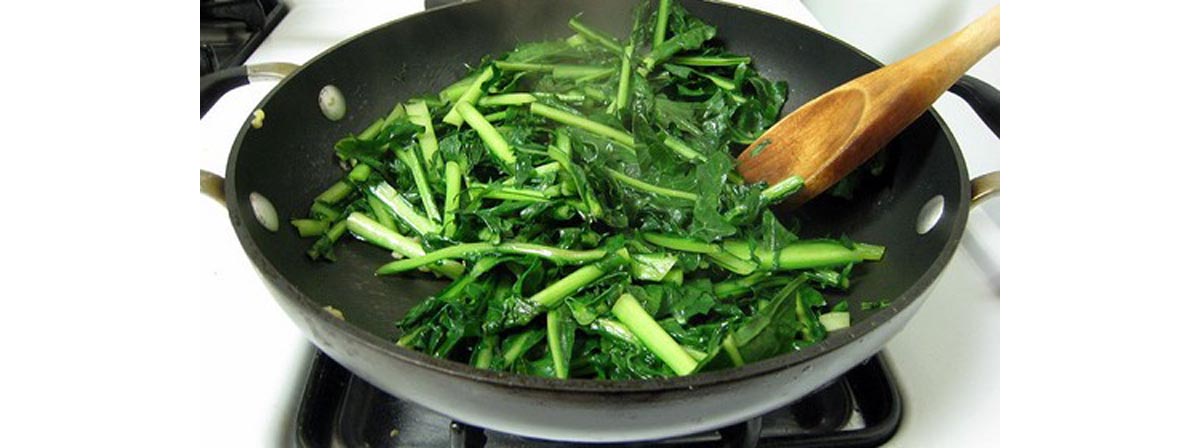Eating your daily greens can help you stay stronger longer if you have lupus, but not for the reason you might expect. A low-fat, low-calorie, plant-rich diet is beneficial for people with lupus and most other autoimmune conditions because of what you don't eat, not because of what you do.

Leptin, The Hormone Your Fat Cells Use to Send Messages to Your Brain
Lupus, it turns out, has a lot to do with a hormone called leptin. This hormone is a protein produced by fat cells that sends a message to the brain that says "I'm full. You can go about your ordinary, everyday activities, and stop eating now."
When the fat cells release leptin into the bloodstream and the brain senses it, the brain organizes the body's activities as if it were well fed. It allows for vigorous exercise to take place. In women of reproductive age, it permits pregnancy. It regulates the appetite so that eating can occur at a normal rate. Neither voracious eating nor anorexia (loss of appetite) will occur if the brain senses the leptin released by fat.
In people who have weight problems, sometimes the brain just doesn't get the message that extra food is not still necessary, and they continue to eat and eat and eat because they still feel the need to do so. In people who don't have leptin resistance, however, it is the fat cells themselves that turn off your appetite.
Leptin Also "Talks" to the Immune System
That isn't all leptin does, however. Leptin also "talks" to the immune system. When the fat cells tell the brain that there is enough stored energy for normal activity, they also tell the immune system to start generating inflammation to protect against the hazards of normal activity.
Inflammation enhances alertness. It prepares the blood vessels to tighten up and preserve blood in case of a bruise, a cut, a scrape, or a fight. And it activates the white blood cells that use inflammation to fight infection, the CD4+ cells.
The problem for people who have lupus is that these white blood cells, also known as helper T cells, also cause the inflammation that inflames and destroys the kidney in lupus. Filling up your fat cells sends a message to the immune system that it's OK to inflame your kidneys. And it's your immune system that actually carries out the tissue destruction that results in lupus.
People who have lupus, therefore, face a dietary dilemma. If they eat enough, their immune systems begin to attack the kidneys. If they can go longer and longer times without eating at all, their immune systems are never given the message to go on the attack. Nobody, of course, can go without eating indefinitely. This kind of erratic diet can quickly lead to a variety of health problems, even if it seems to limit lupus symptoms temporarily.
Green Veggies to the Rescue in Lupus
As most of us know, our bodies have a number of failsafe mechanisms to ensure that we eat when we need to, so that the body can keep functioning optimally. If your leptin levels are low, your vagus nerve is active. The vagus nerve is the nerve that runs up and down the front of your body from your brain to your belly. It controls heart beat. When you don't eat, your heart beats a little faster to help you get up and around to find food.

When you don't eat, your stomach growls. It feels empty. You are more sensitive to pain. You are more active, but the activity your brain prefers involves finding and eating food. Your stomach takes over when your leptin levels are low, so you need to fill it, but you need to avoid filling up your fat cells, so they don't release the leptin that signals your immune system to activate the helper-T cells that damage your kidneys.
Fill Up Your Stomach Without Refilling Your Fat Cells
If you have lupus, you need to keep your stomach full without filling up your fat cells. The way to do this is with leafy greens.
Assuming you aren't a gorilla, you just can't eat enough leafy greens to get all of your nutrients. You will have to eat some other foods just about every day. However, you can eat enough leafy greens that you avoid a surplus of calories that fill up your fat cells.
And if your fat cells aren't full, they aren't releasing leptin, they aren't activating the immune system's helper-T cells, and they aren't interfering with the activity of another kind of white blood cell known as the regulator T cell, also known as the CD8+ cell.
There's no need and no benefit in managing lupus to making your diet 100% leafy greens. You still need protein from other foods, carbohydrate, and essential fatty acids. Fish oil, in particular, is known to be a lupus-protective source of antiinflammatory omega-3 essential fatty acids. But eating 3 or 4 servings of leafy greens every day, even at breakfast, will help you get close enough to fasting to avoid the fat storage that leads to immune activation.
Diet Makes a Difference Over the Long Haul
The symptoms of lupus tend to cycle. Lupus patients can enjoy relatively long periods in which they do not suffer from many symptoms, follow by unpleasant flareups in which nearly every aspect of their lives are impacted by lupus.
This cyclical nature of the condition means that if you start eating more salad and cooked green vegetables and you start feeling great, you can never safely assume that it's just due to the diet, and if you start eating more greens and feel bad, don't assume your diet is to blame in that case, either. But in the long run, eating at least 3 or 4 servings of veggies every day and avoiding excess calories, excess fat, and excess sugar will reduce the severity of the disease.
- Brown AC. Lupus erythematosus and nutrition: a review of the literature. J Ren Nutr. 2000 Oct. 10(4):170-83.
- Liu Y, Yu Y, Matarese G, La Cava A. Cutting edge: fasting-induced hypoleptinemia expands functional regulatory T cells in systemic lupus erythematosus. J Immunol. 2012 Mar 1. 188(5):2070-3. doi: 10.4049/jimmunol.1102835. Epub 2012 Jan 30. PMID: 22291185.
- Photo courtesy of Kris Arnold by Flickr : www.flickr.com/photos/wka/28237605/
- Photo courtesy of eraine by Flickr : www.flickr.com/photos/eraine/3013742040/


Your thoughts on this